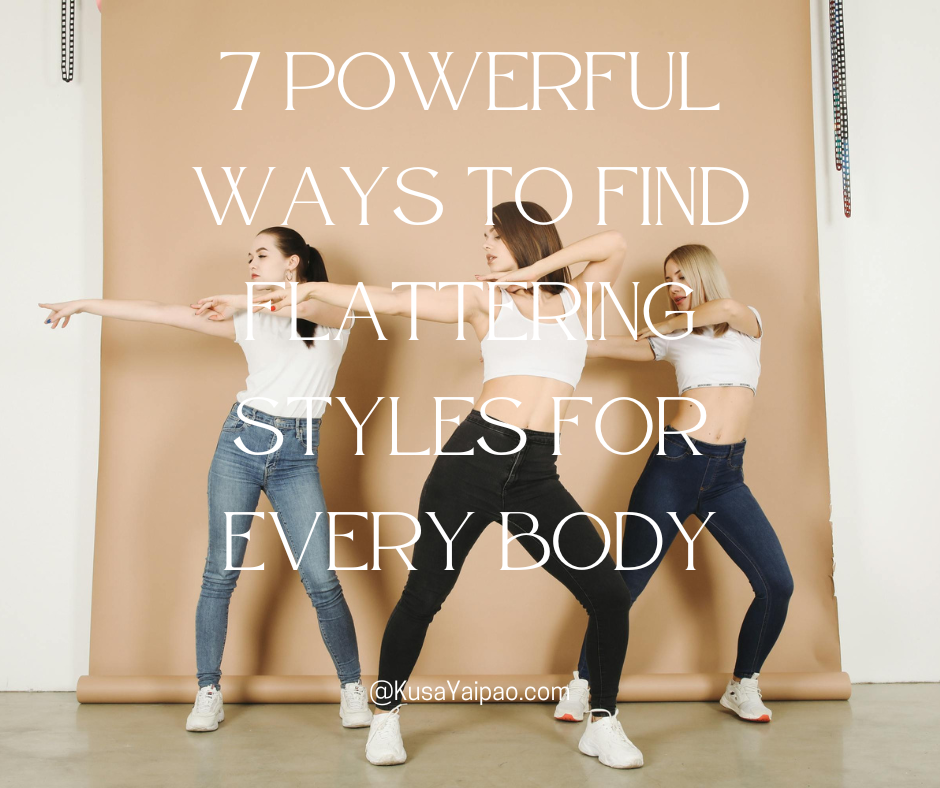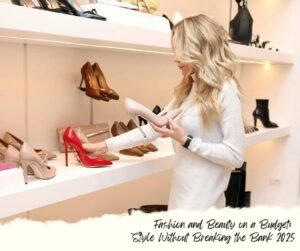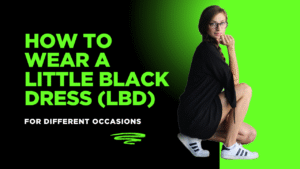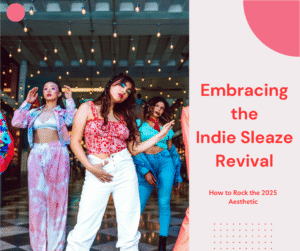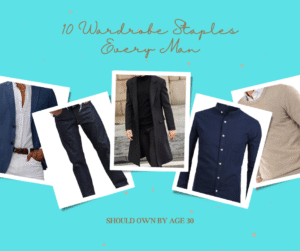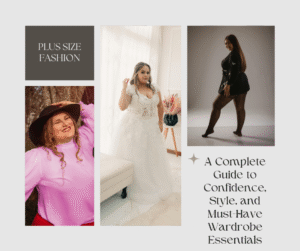This post may contain affiliate links. I may receive compensation if you sign up for or purchase any products through the links below. As an Amazon Associate and affiliate marketer for many other businesses, I earn from qualifying purchases. Please read my disclosure for more information.
Flattering styles refer to clothing choices that enhance an individual’s body shape and highlight their unique features. The importance of selecting outfits that complement one’s silhouette cannot be overstated, as they play a crucial role in boosting confidence and self-esteem. When individuals dress according to their body type, they are more likely to feel comfortable in their skin, enabling them to express their personal style with assurance.
Understanding the various body shapes, such as pear, apple, hourglass, and rectangle, allows individuals to make informed decisions regarding their clothing selections. Each body type has distinct attributes, and identifying one’s own shape is the first step towards embracing flattering styles that celebrate those characteristics. For instance, an apple-shaped body may benefit from styles that define the waist and elongate the torso, while a pear-shaped individual might find success in A-line skirts that draw attention to the upper body while providing balance.
It is also imperative to recognize that fashion is inclusive and can be tailored to accommodate all sizes and shapes. The notion that only certain body types can wear specific styles is a myth that should be dispelled. Every individual possesses unique features that deserve to be highlighted, and flattering styles should encourage rather than limit expression. By opting for clothing that aligns with their body shape, individuals not only enhance their appearance but also embrace their identity.
Ultimately, the exploration of flattering styles is about more than just outward appearance; it is a journey of self-acceptance. Understanding one’s body and finding the right styles can lead to an empowered sense of self, allowing individuals to feel confident and beautiful in their attire, enhancing their overall presence.
Understanding Body Shapes
Finding flattering styles begins with understanding one’s body shape, as this knowledge is crucial in selecting clothing that complements an individual’s natural form. Generally, body shapes can be categorized into five primary types: apple, pear, hourglass, rectangular, and inverted triangle. Each shape possesses unique characteristics that aid individuals in identifying their particular body type.
The apple body shape is distinguished by a fuller upper body, characterized by broader shoulders and a less defined waist. Individuals with this shape typically have a larger bust and narrower hips, which results in a rounded appearance. When dressing this type, the focus should be on creating balance and drawing attention away from the midsection.
Conversely, the pear shape features a smaller upper body with narrower shoulders, a defined waist, and fuller hips and thighs. This body type tends to create a curvy silhouette, whereby the goal of selecting clothing should involve accentuating the waist while softening the hips. Flattering styles often include A-line skirts or tops that highlight the upper body.
The hourglass shape is characterized by well-balanced proportions, with both bust and hips measuring approximately the same and a defined waist. This universally acknowledged shape allows for a wide variety of styles, as the emphasis should be on maintaining the natural curves without overwhelming them with excessive fabric.
Individuals with a rectangular body shape have similar measurements across the bust, waist, and hips, resembling a straight line. The objective for this body type revolves around creating curves through strategic styling, such as incorporating peplum tops or belted dresses.
Lastly, the inverted triangle shape features broader shoulders with a narrow waist and hips. This silhouette often calls for balancing the upper body with details on the lower half, focusing on enhancing the hips through flared pants or A-line skirts.
Understanding one’s body shape is indeed vital for choosing fashion that enhances personal style, boosts confidence, and flatters natural features. By identifying their unique shape, individuals can make informed decisions that transform their wardrobe into a collection of styles that celebrate their figure.

Choosing the Right Fabrics
Fabric selection plays a pivotal role in how clothing fits and flatters various body shapes. Different materials possess unique characteristics that can enhance or detract from one’s overall appearance. Understanding the properties of fabrics can empower individuals to make informed choices when selecting garments that accentuate their assets.
For garments that drape elegantly, fabrics such as chiffon, jersey, and silk are ideal. These materials gently hug the body, creating a soft silhouette that can camouflage larger areas while enhancing curves. Chiffon, for instance, adds a light and airy quality, making it perfect for airy blouses or flowing skirts that flatter the figure without overwhelming it.
On the other hand, structured fabrics like denim, twill, or canvas provide shape and form. These materials are excellent for creating tailored outfits that define the waist and highlight the body’s natural lines. A well-fitted blazer in a sturdy fabric can offer much-needed structure to looser-fitting garments, striking a balance between comfort and smart styling.
It is also essential to consider the texture and weight of the fabric. Heavier fabrics such as wool or suiting materials can add bulk, which may not be suitable for every body type. Conversely, lightweight textiles allow for layering while maintaining a streamlined appearance. When combining various fabrics, contrasting textures can create visual interest. For instance, pairing a heavy knitted sweater with a sleek silk skirt can result in an appealing and sophisticated outfit.
Ultimately, understanding how fabric affects fit and silhouette is crucial in choosing clothing that flatters your body shape. By thoughtfully selecting materials that either enhance or balance your innate features, you can elevate your personal style and ensure confidence in your appearance.
The Power of Fit and Silhouette
Achieving a flattering look is predominantly determined by the fit and silhouette of clothing. These elements are crucial in how garments interact with the body’s natural shape. To begin with, understanding the term “silhouette” is imperative; it refers to the overall shape and outline of an outfit. The right silhouette can accentuate individual attributes while deemphasizing less favorable areas, creating a harmonious appearance tailored to one’s body type.
Cinch and layering techniques further enhance the visual appeal of outfits. Cinching at the waist, for example, can create an hourglass figure, improving body proportion. A well-structured blazer or tailored dress can cleverly reflect one’s body’s lines, emphasizing curves or providing a more elongated appearance depending on design choices. Layering, when done appropriately, can add depth to an outfit while also contributing to comfort. For instance, a structured outer layer over a fitted top can create a visually balanced look without overwhelming the inset layers.
When selecting cuts that flatter, it is essential to consider body shape. A-line skirts are universally loved for their ability to suit various figures, gently skimming the body’s curves while providing a flowy finish. Similarly, structured blazers bring a sophisticated touch and can define the upper body while complementing a variety of looks. These classic pieces can serve as wardrobe staples, enabling effortless mix-and-match for varied occasions.
Ultimately, opting for the right fit will allow individuals to feel empowered in their style choices, promoting confidence and comfort. By focusing on the nuances of silhouette and tailoring, one can achieve a polished appearance that truly resonates with personal style. The journey of discovering flattering styles begins with an understanding of these critical aspects.
Emphasizing the Right Features
Identifying and emphasizing specific features can significantly enhance one’s personal style. The key is to choose outfits that draw attention to your best attributes while creating a harmonious overall look. Certain areas of the body often become focal points, such as the legs, waist, or shoulders. By leveraging styling techniques such as accessories, patterns, and color blocking, one can effectively highlight these areas.
For those who wish to showcase their legs, fitted trousers or a-line skirts in bold or vibrant colors can create a stunning effect. Pairing these pieces with ankle boots or heeled sandals can elongate the appearance, adding to the flattering effect. When considering patterns, vertical stripes or asymmetrical designs can also enhance the visual appeal and draw the eye in an upward direction.
The waist is a feature that many individuals prefer to accentuate. Wearing high-waisted pants or skirts aids in defining the waistline, contributing to an hourglass silhouette. Adding a statement belt can further emphasize this area, creating a striking focal point. Choose tops that are slightly tucked in to showcase the waistline without overwhelming the outfit.
When one wishes to highlight the shoulders, opting for off-the-shoulder or strapless tops can effectively bring attention to this area. Additionally, embellishments such as ruffles or shoulder pads can create bold statements and enhance shoulder proportions. Pairing these tops with fitted bottoms balances the silhouette while maintaining an eye-catching aesthetic.
Moreover, incorporating color blocking can be a powerful tool. Using contrasting colors to create distinct sections of an outfit can draw attention to the desired features. For example, a bright top paired with darker bottoms can enhance the bust while maintaining a sleek lower body appearance. Ultimately, understanding the balance between harmony and proportion when styling outfits can lead to successful enhancement of key features, allowing for a confident presentation of personal style.

Accessorizing to Enhance Your Look
Accessorizing is a crucial aspect of creating a well-rounded ensemble that can elevate any outfit. When effectively chosen, accessories such as belts, jewelry, bags, and shoes not only complement your body shape but also add a personal touch to your overall appearance. The key lies in understanding how to select items that harmonize with your attire while enhancing your unique features.
Belts, for instance, are functional accessories that can also shape the silhouette. Choosing a belt that cinches at the waist can accentuate an hourglass figure, while a wider belt can create balance for those with straighter body types. Moreover, the material and color of the belt should align with the outfit’s palette to create a cohesive look. It is essential to avoid overly contrasting accessories that may distract rather than enhance the ensemble.
Jewelry plays a pivotal role in expressing individuality and can vary from subtle accents to bold statement pieces. For a balanced appearance, one should consider the scale of the jewelry in relation to their body shape. Delicate necklaces can complement a petite figure, while larger pieces can add flair to more robust body types. Furthermore, the choice of metal or stone can tie into the overall color scheme of one’s outfit, providing an added layer of sophistication.
Bags and shoes are equally important in refining your look. A well-chosen bag can serve as a focal piece that brings the outfit together, while shoes are instrumental in providing both comfort and style. Opt for shapes and designs that flatter your body type. For example, pointed-toe shoes can elongate the legs visually, making them a popular choice for various occasions.
Ultimately, finding the right balance between minimalism and statement accessories ensures that your outfit conveys the intended message without overwhelming your overall look. Accessories should guide your outfit’s appeal, enhancing your style while celebrating your individuality.
Incorporating Trends Appropriately
Fashion trends can be exciting, but the challenge lies in incorporating them into one’s personal style while considering body type. The first step in this process is to evaluate current trends with a discerning eye, identifying which styles can genuinely enhance your silhouette. Trends that celebrate body positivity are essential; for instance, flowing silhouettes can complement various figures, while structured pieces may enhance one’s natural shape. It is crucial to assess whether a trend aligns with your preferences and comfort, ensuring you feel confident in your choices.
One effective method for adapting trends is to integrate them subtly into your existing wardrobe. For example, if oversized clothing is trending, consider pairing an oversized jacket with tailored trousers. This balance not only maintains a flattering figure but also infuses modern touches into timeless outfits. Additionally, utilizing accessories can allow for easier adaptation of trends without overhauling your entire wardrobe. Trendy belts, scarves, or jewelry can elevate a basic ensemble, allowing you to stay stylish while emphasizing your best features.
Many trusted fashion sources and influencers have insights on effectively incorporating trends. Following experts who resonate with your body type can provide inspiration for adaptation. They often showcase how to merge trends with personal style while also emphasizing comfort. Platforms such as Instagram and fashion blogs can serve as excellent resources for discovering how others incorporate current styles, providing fresh ideas that can be tailored to fit individual preferences. Through thoughtful selection and adaptation, one can embrace the latest fashion trends in a manner that is both flattering and faithfully personal.
Building a Versatile Wardrobe
Creating a versatile wardrobe is paramount for anyone seeking to curate a collection of clothing that not only flatters their body shape but also adapts to various occasions and seasons. A well-thought-out selection of timeless pieces serves as the foundation upon which individual style can be built. To achieve this, it is essential to include key staples that resonate with different body shapes while allowing for a mix-and-match approach.
Classic jeans are a must-have for every wardrobe, as they offer a foundational element that pairs effortlessly with numerous tops and outer layers. Opt for styles that complement your body shape; for example, high-waisted jeans can elongate the legs, making them suitable for a variety of figures. Tailored trousers are another essential item, providing a polished look for both professional and casual settings. A pair of well-fitting trousers can enhance your silhouette while ensuring ample comfort throughout the day.
Moreover, statement tops play a crucial role in elevating your wardrobe. They can transform a simple outfit into something truly striking, whether it’s through unique patterns, vibrant colors, or intricate designs. Incorporating tops that draw attention to your best features allows you to express your personal style while remaining versatile. Additionally, layering options such as cardigans and blazers are vital for transitioning between seasons; they can add warmth in colder months while providing depth to summer outfits.
Finally, accessorizing wisely can expand your wardrobe’s versatility even further. Items like scarves, belts, and versatile shoes can significantly alter the aesthetic of your outfit, enabling you to efficiently create a well-rounded collection. By focusing on longevity and adaptability in your choices, you create a versatile wardrobe that remains both flattering and functional year-round.
Conclusion: Embrace Your Unique Style
In our exploration of flattering styles for every body, we have delved into the importance of recognizing and celebrating individual body shapes and personal preferences. The journey to finding the right fashion choices begins with understanding that each body is unique, and therefore, deserves a personalized approach to style. Whether it is through discovering the right cuts, colors, or patterns that resonate with you, embracing your individuality can lead to enhanced confidence and self-expression.
As we highlighted, experimenting with different silhouettes and styles is integral to this process. It is essential to be open-minded when trying new looks, as what may seem unflattering at first can reveal a hidden charm that flatters your specific body type. The ability to adapt trends in a manner that feels authentic to oneself fosters creativity and boosts self-esteem.
Fashion should always be a source of joy and empowerment, allowing individuals to showcase who they are. Thus, do not hesitate to step out of your comfort zone, mix and match pieces, and play with accessories that amplify your style. Remember that finding your ideal wardrobe is a personal journey; being patient with yourself while exploring diverse options can lead to fulfilling outcomes.
We encourage you to continue your fashion education by seeking inspiration from various sources. Explore fashion blogs, connect with personal styling services, or engage with communities that celebrate body diversity. These resources can provide valuable insights and innovative ideas, helping to further cultivate your unique style. Embrace the process and enjoy expressing your individuality through fashion, as each style you try can contribute to a greater understanding of your personal aesthetic.

